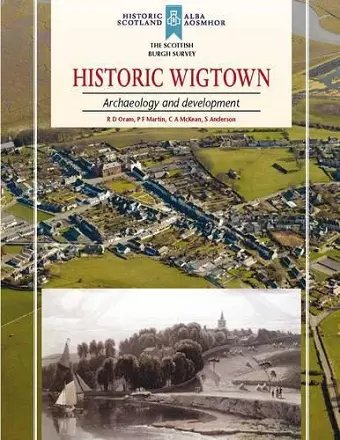Historic Wigtown
Archaeology and Development
C McKean author S Anderson author RD Oram author PF Martin author
Format:Paperback
Publisher:Council for British Archaeology
Published:1st Apr '14
Currently unavailable, and unfortunately no date known when it will be back

Situated in what now seems a remote corner of south-west Scotland, Wigtown was once an important county town. With its harbour and location at the lowest fording point of the River Cree, Wigtown was at one time part of a major network of land and sea routes, including a pilgrim route to Whithorn. The layout of the town is notable for its large market square, a reflection of its importance in the cattle trade in the medieval period. The town achieved burgh status in the thirteenth century, by which time it was an important trading centre, and the present arrangement of streets and burgage plots dates to this time. Today the principal access route is from the north, rather than through the East and West Ports which controlled access to the great market place. The burgh arms depict a three-masted sailing ship, demonstrating the importance placed on its maritime trade. This book examines both the town’s political history, as it passed between the earldoms of Wigtown and Douglas, and its economic history, as it competed with Whithorn, before its eventual decline in the later nineteenth century. The authors use the surviving buildings to examine the development of the town from the medieval to the modern period. This book is part of the Scottish Burgh Survey – a series funded by Historic Scotland designed to identify the archaeological potential of Scotland’s historic towns.
ISBN: 9781909990005
Dimensions: unknown
Weight: unknown
152 pages